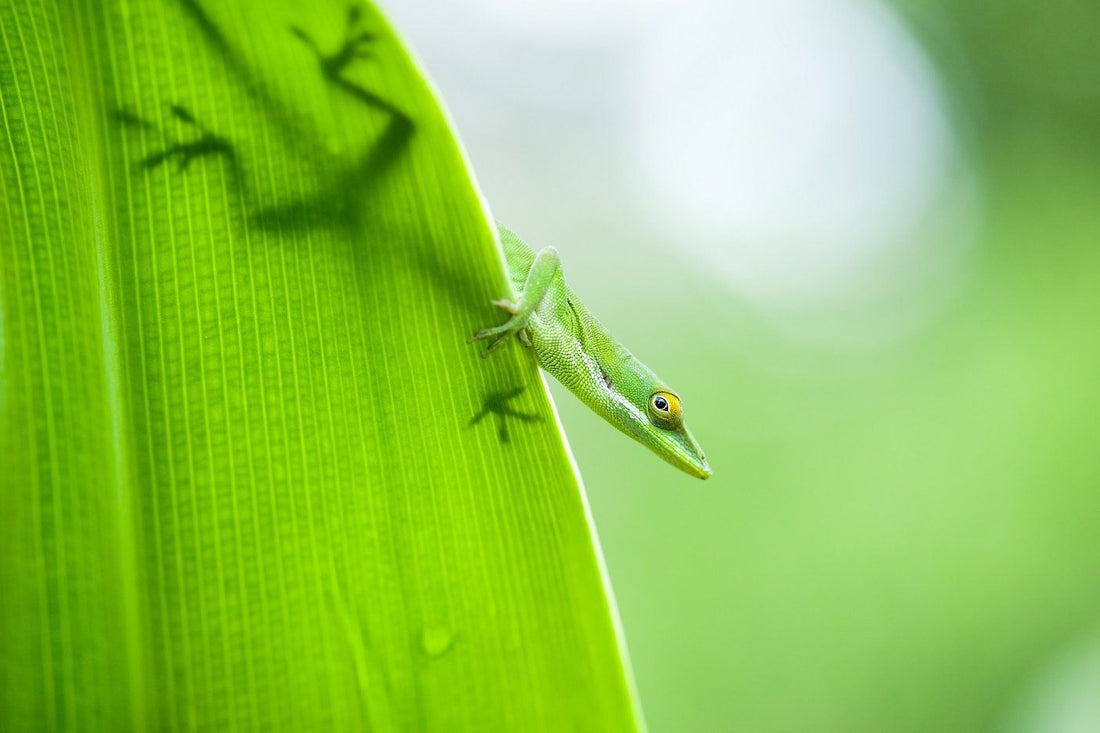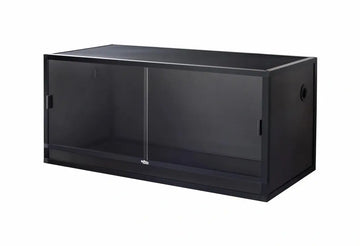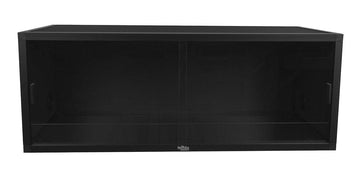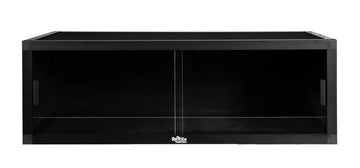Introduction
Green anoles (Anolis carolinensis) and brown anoles (Anolis sagrei) are 5-8” long, diurnal lizards. The green anole is native to the US, while the brown anole is native to Cuba and the Bahamas but has formed invasive populations in the US. Both can be found primarily in the southeastern US and Hawaii, although brown anoles can be seen as far north as southeast Canada and as far south as Panama.
Anoles have slender, athletic bodies, elongated triangular heads, long tails, and long toes. Green anoles range from brown to green in color, with a white dorsal stripe on juveniles and females and a sizable orange-pink dewlap under males’ throats. Brown anoles are generally light to dark brown/black in color, with a light dorsal stripe flanked by darker markings. Males have a large, yellow to orange dewlap under their throat.
Anoles are much more sensitive than advertised in pet stores, and given that they are not very handleable, we find that they tend to make poor pets for new reptile keepers. However, they do make a lively display species when kept correctly. Anoles typically have a 3-6 year lifespan in captivity.
Enclosure
Although there are many popular housing options for anoles, we recommend an 18” L x 18” W x 24” H enclosure. Of course, we find that bigger is usually better! For example, a 24” x 24” x 48” has only a slightly larger footprint, but provides your pet with tons more space to utilize.
Can you keep two anoles together?
Housing multiple anoles in the same terrarium is not recommended and may result in fighting if attempted and/or breeding if attempted.
How to quarantine an anole
When you bring home a new pet reptile, it’s best practice to quarantine it first, especially if you own other reptiles. Quarantine is the practice of keeping an animal isolated and under sterile conditions in order to reduce the potential spread of disease.
Even if you don’t have other reptiles that could potentially get infected by anything the lizard might be carrying, maintaining quarantine conditions for the first 3 months will enable you to more easily monitor for concerning symptoms and more easily treat them as well. You can do this with the same enclosure that you plan to keep the lizard in long-term, or you can do this with a modified tub turned on its short side. As long as it is set up appropriately, a tub can make appropriate short-term quarantine housing.
Some rules for successful anole quarantine:
- Keep the lizard in a separate room from other reptiles.
- Do not use the same equipment for the new addition as for your other reptiles.
- Fully disinfect the enclosure weekly.
- Get the lizard checked by an experienced reptile veterinarian and treated for parasites if needed.
- Observe for symptoms of disease or illness.
- Check your lizard and its water bowl closely for mites, especially if the lizard is soaking. If you do find mites, treat them accordingly.
Lighting
Do anoles need UVB?
We have found that Anoles do require UVB lighting in captivity. UVB lighting helps provide a clear day/night cycle, provides all of your pet's vitamin D, strengthens the immune system, facilitates better digestion, and other benefits.
The best UVB bulbs for anoles housed in an 18-24” wide terrarium are:
- Arcadia ShadeDweller Kit — 6” above basking branch
- Zoo Med T8 Reptisun 10.0, 24” — 8” above basking branch
- Arcadia T5 HO 6%, 22” — 8” above basking branch
For best results, house the UVB bulbs in a reflective fixture. Position the lamp on the same side of the terrarium as the heat lamp.
UVB is blocked by glass and plastic, so placing the terrarium in front of a window doesn’t count as “free UVB” — in fact it can make your terrarium too hot due to the greenhouse effect. Don’t forget to replace your bulb every 12 months!
We suggest leaving lights on for about 8-12 hours daily to follow a natural day-to-night cycle. You may wish to adjust this for seasonal changes, such as running the lights longer during the summer. All lights should be off at night.
Heating
The best temperature for anoles
Like other reptiles, anoles are cold-blooded, which means they rely on external temperatures to manage their body temperature and metabolism. A reptile’s enclosure should offer a range of temperatures to allow them to thermoregulate effectively.
We suggest an ambient of about 80-82°F, with a hotspot of no higher than about 90°F on the warm side. The cooler side of the enclosure should stay in the mid to high 70s. Each reptile may have different preferences and needs, so you may need to adjust these ranges up or down slightly to accommodate your pet better. It is good practice to monitor your animal and make adjustments as needed.
Make sure you’re maintaining appropriate temperatures using digital probe thermometers. Basking/surface temperatures are best measured with a temperature gun. Understanding and observing your specific animal to best identify their needs is crucial.
Overhead heating methods, such as halogen bulbs, are recommended to achieve and maintain these temperatures. You may also use alternative methods like radiant heat panels. We do not suggest under-tank heating, ceramic heat emitters, or colored bulbs as these are not as effective.
It is essential to regulate and monitor the temperature of the heating method chosen. You can use a thermostat, dimmer switch, or rheostat to control the heat output. You should conduct regular temperature checks to ensure everything is functioning correctly.
Humidity
Best humidity levels for anoles
Anoles are a tropical species, so the humidity inside their enclosure should be fairly high: 60-80%. Humidity levels should be allowed to naturally rise at night and dry out a bit during the day.
Humidity can be measured via a digital probe hygrometer, with the probe placed in the middle of the terrarium.
How to manage humidity for anoles
One effective method to increase humidity levels in the enclosure is to mist it with a spray bottle or automated misting system twice daily. Misting the enclosure first thing in the morning and again at night is recommended. Another way to maintain humidity levels is to mix water directly into the substrate. A cool mist humidifier connected to a hygrostat can also help. We also recommend installing a humid hide for your anole, lined with moistened sphagnum moss, in the upper levels of the enclosure. Using live plants in the enclosure is another great way to keep humidity a bit higher more naturally.
Substrate
Choosing a suitable substrate is essential when creating a comfortable and healthy habitat for your anole. A great option is to provide a thick layer of natural substrate (bedding), which can cushion and help maintain humidity levels while enhancing the enclosure's overall appearance. We recommend the following substrates for anoles:
- Zoo Med Eco Earth
- Zoo Med ReptiSoil
- Exo Terra Plantation Soil
- Zilla Jungle Mix
Substrate mixes are also a great option. You can mix several commercial substrates or create a mixture using a combination of organic topsoil, play sand, and moss. Other self-made mixture options are possible, and you should research the subject and ratios thoroughly before starting your custom mix.
Layering clean, chemical-free leaf litter on top of the substrate can also help with humidity.
The substrate should be at least 2” deep and be completely replaced every 3-4 months. If using paper towels, replace them once they are soiled. Paper towels can quickly develop mold and hold bacteria if left unchanged for too long.
If you use a bare bottom enclosure, or alternative options such as tile, disinfect the material anytime they are soiled.
Ultimately, the choice of substrate for your pet’s enclosure will depend on your personal preferences and your pet's needs. Regardless of which substrate you choose, you must maintain it properly to ensure your animal stays healthy and comfortable.
What to know about cleaning an anole enclosure
Replacing your anole’s substrate is a good time to give the entire enclosure a good cleanout. Here are some general steps to follow:
- Remove your lizard from the enclosure and put it inside a temporary, escape-proof holding container.
- Remove all substrate and décor.
- Vacuum and wipe down the enclosure to remove leftover particles.
- Apply a reptile-safe disinfectant to the floor and walls of the enclosure and let sit for the disinfectant’s recommended contact time.
- Meanwhile, soak branches, rocks, hides, and other decor items in a disinfectant rated for porous materials for the recommended contact time.
- If required, rinse the enclosure and the accessories with clean water to remove disinfectant residue. Allow everything to dry.
- Pour new substrate into the enclosure. Mix in water until uniformly moistened but not wet.
- Arrange décor.
- Reintroduce your lizard to the clean setup.
Several veterinary-grade disinfectant options are available that are effective for both porous and nonporous materials, such as Chlorhexidine, F10SC, and CleanBreak. It is essential to carefully follow the instructions on the packaging to ensure safe and proper use. Alternatively, you can disinfect enclosures by using a diluted bleach solution. For porous materials, a 1:10 dilution is recommended, while for nonporous materials, a 1:50 dilution should be used.
Décor
How to decorate a anole terrarium
We have found that providing environmental enrichment for your anole can greatly improve its quality of life by keeping it stimulated and engaged. Adding carefully selected décor items can encourage natural behaviors and exercise, leading to a happy and healthy pet.
Since anoles are primarily arboreal, we suggest providing branches for your anole to bask on and some live or artificial foliage to hide in. However, it’s best to include other items, such as:
Food
What to feed to an anole
Anoles are insectivores, which means that they need to get the majority of their nutrition from insects. Juveniles should be fed daily, while adults can be fed every other day. Each feeding should consist of about 2-3 insects slightly smaller than the anole’s head, give or take depending on your animal's preference and body condition.
Feeder insects for anoles: dubia roaches, discoid roaches, red runner roaches, crickets, grasshoppers, silkworms, black soldier fly larvae & flies, blue bottle flies, hornworms, mealworms, superworms.
Supplements
You will also want calcium and vitamin supplements to prevent your anole from developing a deficiency. This is our recommended schedule for supplementing:
Every feeding: (one) calcium without D3
2x-3x/month: (one) multivitamin
It's always a good idea to make sure your feeder insects are well hydrated and gut-loaded prior to feeding.
Providing drinking water for anoles
Of course, don’t forget small food and water bowls and a feeding ledge! Since anoles are arboreal, they prefer to eat and drink up off the ground. Change the water daily and scrub the bowl with a reptile-safe disinfectant weekly, or whenever it becomes soiled. Misting water on the leaves is also a great way to help keep your anole hydrated, as they will lick droplets off the leaves as well. Just be sure not to oversaturate the enclosure.
Handling
How to handle your anole
Reptiles generally don’t tend to appreciate petting and handling in the same way that dogs and cats do. Anoles are one of the types of reptiles that are best to leave alone rather than attempt to handle regularly. If you want to interact with your pet anole, try hand-feeding it or using a pair of feeding tweezers.
How to provide enrichment for an anole
Enrichment is the practice of strategically providing items and activities to encourage a captive animal to exercise natural behaviors. This also helps increase activity, reduce stress, and generally increase the animal’s welfare.
Here are some suggestions to provide enrichment for anoles:
- Rearrange the enclosure. If total overhauls are too stressful for your pet, move one thing every so often at your pet’s pace.
- Scatter feeding. Instead of offering their food in the same place every time, try moving the feeding platform every once in a while to stimulate your lizard’s foraging instincts.
- Supervised exploration time outside of the enclosure. Make sure to keep them away from situations that you can’t get them out of.
Health
When should you take an anole to the vet?
Dogs and cats aren’t the only pets who need veterinary care — lizards get sick and need professional help the same as any other pet. If you notice that your anole has any of the following symptoms, make an appointment with an experienced reptile vet right away:
- Mucus discharge from the mouth/nose/eyes
- Persistent lethargy
- Unexplained weight loss
- Persistent lack of appetite
- Straining/inability to defecate
- Large patches of missing scales
- Open wounds
- Swelling or bumps anywhere on the body
- Sudden, unusually aggressive behavior
You can find a reputable reptile vet near you with the ARAV Find a Vet tool.
*This care sheet contains only very basic information. Although it’s a good introduction, please further your research with high-quality sources. The more you know, the better you will be able to care for your pet!











